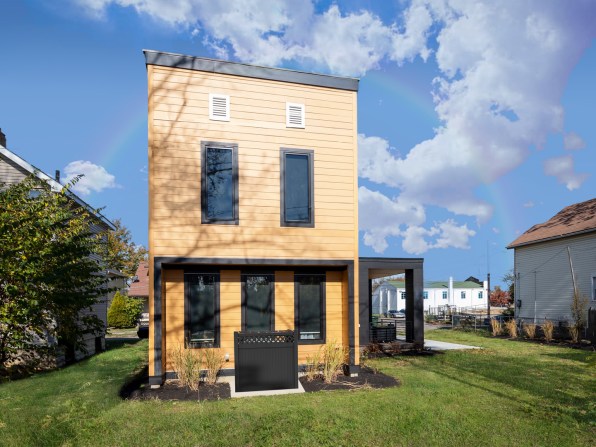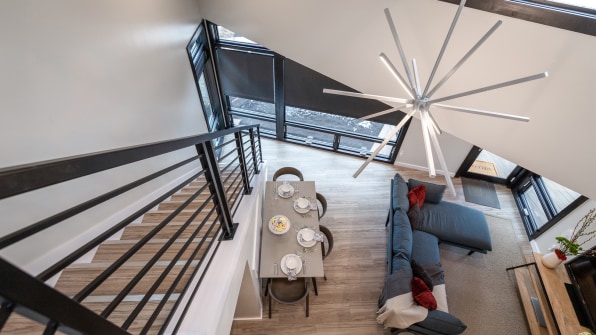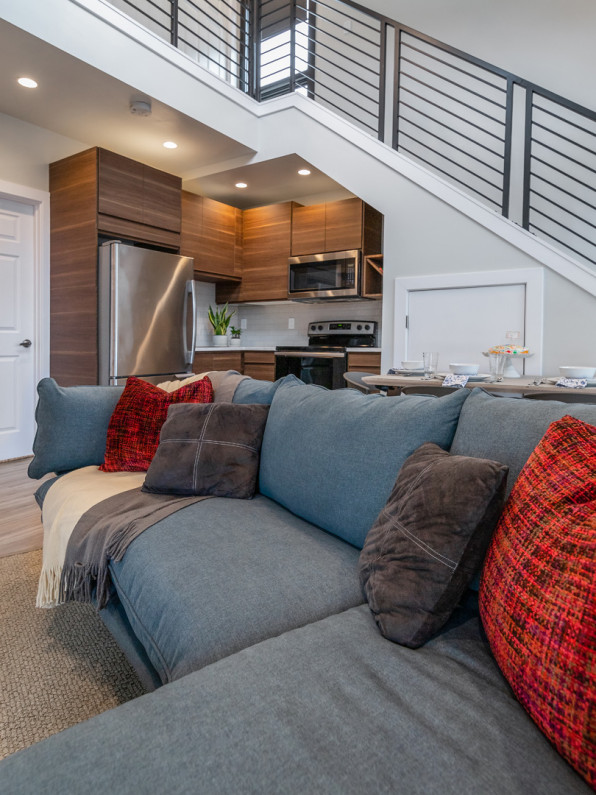In early 2018, the architecture firm Moody Nolan took a look at its charitable giving. As a 220-employee, 11-office firm headquartered in Columbus, Ohio, Moody Nolan is an established player in the business, and regularly makes donations in the markets where it works. The informal audit showed a lot of modest donations here and there, supporting nonprofits and charity events. “When it added up it was a big number,” says CEO and president Jonathan Moody. “But what do we have to show for it?”
The firm, cofounded in 1982 by Moody’s father, Curt, and now the largest Black-owned architecture firm in the U.S., moved to refocus its giving on a more tangible outcome. The firm’s architects decided to put their money where their skills are and created the Legacy House project, a planned annual gift that will grant a free home to a family in need in one of the 11 cities where Moody Nolan has offices. The first home has been completed in Columbus, and a second is permitted for construction in Nashville, Tennessee.

“At the end of the day, a point that many architects take pride in is to be able to come back to something, point at it, and say that’s what we did, that’s the thing that made a difference,” Moody says.
The first Legacy House is a 750-square-foot, three-bedroom home with a modernist angular roof. Built on an empty mid-block lot in the Linden neighborhood of Columbus, the home has a large porch designed to provide both privacy for the residents and a visible connection to the neighborhood. “It’s about seeing and being seen,” Moody says.

Though Moody Nolan typically works at a larger scale, designing projects like a library at Texas Southern University in Houston and an arena for DePaul University in Chicago, its efforts on the small house were less a design challenge than an ideological one. “It was a lot harder than we thought, but not for the reasons we thought,” Moody says.
Again and again, he says, the firm was asked why they were doing it, and what a single house could really do in the face of a local affordable housing deficit of tens of thousands. Moody says those questions pushed the firm’s architects to think harder about what they were trying to achieve. At its heart, Moody says, the project was intended to be a catalyst, encouraging others to give back in a similar way.
That led the firm to bring in a number of collaborators. Using relationships in the building industry, it drew donations and pro bono work from materials suppliers and engineers, and even raised funds among its own staff to outfit the home with linens and supplies. The land itself was donated by the Columbus Metropolitan Housing Authority. Moody Nolan also partnered with the YMCA of Central Ohio to help identify the home’s eventual recipients. They picked from a pool of unhoused single mothers with children, who make up a large number of the city’s unhoused population.

Moody says architecture firms are obviously suited to pursuing this kind of project, applying their skills to meet a local need. That doesn’t mean every firm needs to start giving away houses, though. “We fully recognize that it’s a privilege for us to be able to do this. Some people can do more,” Moody says. “It’s not necessarily that you have to do this exactly, but do something.”
Giving homes away to needy populations, especially when the designs are made without their input, can be fraught with challenges. After Hurricane Katrina hit New Orleans in 2005, for example, a high-profile home-rebuilding effort was launched by actor Brad Pitt and sustainability architect William McDonough, called the Make It Right Foundation. Despite the high aims of the project and the lofty environmental standards of the architecture, the homes soon suffered from internal rotting and structural problems, and some were slated for demolition. The foundation recently sued its former executive director for mismanagement.
Moody acknowledges that charitable giving, even in the form of a home, is not the ultimate solution to housing challenges around the country. He’s hoping that the Legacy House program encourages others to reconsider their giving and spurs local and national policymakers to think more creatively about addressing long-standing housing shortages. Architects giving away homes, he says, should be just the start.
“The way we can be most effective is not us trying to solve it ourselves,” Moody says, “but elevating the conversation to get to a point where government and others can scale this and put in place the infrastructure, programs, and policies to address the need.”
